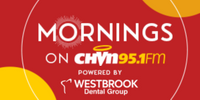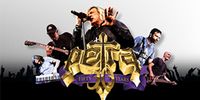Tamara Lich and Chris Barber are not on trial for their political beliefs against COVID-19 public health orders, but for the means the two "Freedom Convoy" organizers used in trying to end them, a Crown prosecutor argued Tuesday.
Tim Radcliffe used his opening remarks at the start of their 16-day trial to paint a picture of Lich and Barber at the heart of the protest that gridlocked downtown Ottawa near Parliament Hill for three weeks in January and February 2022, until police moved in to clear the streets.
"This occupation was anything but peaceful," Radcliffe told the court.
Lich, who hails from Medicine Hat, Alta., and Barber of Swift Current., Sask., were part of the original group that mobilized a convoy of big rigs and other vehicles to drive to Ottawa to protest COVID-19 public health orders and the federal Liberal government, more broadly.
Together they are charged with mischief, counselling others to commit mischief, intimidation and obstructing police. Barber, who owns a trucking company in Saskatchewan, is also charged with counselling others to disobey a court order that banned loud honking in the city's downtown core.
Both appeared in court and sat quietly on a front bench as Crown presented its opening arguments.
In laying out the Crown's position, Radcliffe told the court that Lich and Barber not only counselled people to come to Ottawa but to remain there, using what the lawyer called their "infamous 'Hold the Line' rallying call."
He said the pair also "pressured decision-makers," and exerted "control and influence" when it came to where vehicles were parked, all in the name of achieving the political purpose of ending pandemic health orders like vaccine mandates.
"This case is not about their political views," Radcliffe told the court. "What's at issue … is the means they employed, not the ends."
He went on to say Lich and Barber did not just "hold the line" during those three weeks in Ottawa, but they "crossed the line, and in so doing they committed multiple crimes."
The Crown hopes to establish that Barber and Lich worked together in lockstep, so that evidence against one of them will apply to both.
About 50 people, including roughly 20 there to support Lich and Barber, filled the courtroom Tuesday. Justice Heather Perkins-McVey said given the public interest in the case she requested the largest courtroom to allow as many people as possible to watch. She also took a moment during the Crown's opening remarks to remind the members of the public in the room that the Crown's opening remarks are not considered evidence, but only its perspective of the case.
Before the trial got underway Radcliffe told the court the Crown plans to submit more than 100 pieces of evidence and call 22 witnesses, including top Ottawa police and city officials. Former Ottawa mayor Jim Watson, who was at the courthouse Tuesday, confirmed he expects to be called as a witness.
Radcliffe said the Crown intends to demonstrate using 50 videos, including some filmed by Lich and Barber themselves, that shows they were key organizers of the movement that led to an "occupation" around downtown Ottawa.
Immediately, each of their lawyers jumped in to dispute the use of the word "occupation," calling it "inflammatory, inaccurate and insensitive."
"In a world where the trite, the mundane and the trivial are called 'awesome' and 'amazing,' it is no surprise, but nevertheless disappointing, that the demonstration of Jan. 26 to Feb. 19 in the downtown of Ottawa would be referred to as an occupation," Lawrence Greenspon, who is representing Lich, said Tuesday.
He suggested to the court "occupation" is not a fitting word to use, given past and present examples of people living under such conditions.
Diane Magas, who is representing Barber, also requested to the court that the Crown not use the term.
Ottawa police Const. Craig Barlow was the Crown's first witness Tuesday. While he was on the stand, court viewed a 12-minute compilation video of scenes from the convoy protest he compiled to introduce the court to what life was like in Ottawa at the time. Most of it was taken from police body cameras.
The sound of revving engines, air horns, chants of "Freedom" and "We're not leaving" filled the Ottawa courtroom as scenes of blocked intersections, massive crowds, open fires and Canadian flags played on a large TV screen.
The video also showed a sea of protesters pushing back against police during a massive operation to put an end to the protest.
This report by The Canadian Press was first published Sept. 5, 2023.












